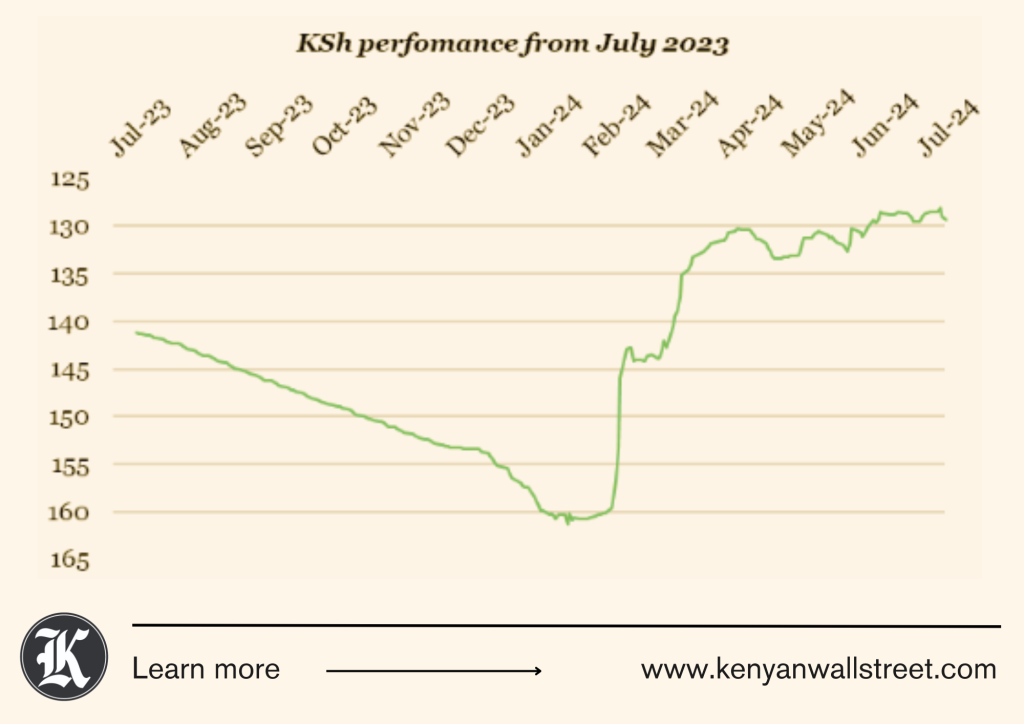Last week, the Kenya Shilling weakened marginally against the US Dollar, closing the week at KSh 130.7299 from KSh 129.3 the previous week.
- •The Shilling’s 0.9% downtick dragged the year-to-date performance to 16.6%.
- •The marginal weakening is partly attributed to high demand for dollars during the week coupled with the recent Moody’s downgrade.
- •The equities market closed the week on a bearish note, signaled by the NSE All Share Index (NASI), which was down marginally week on week by 1.4% to close at 108.61.
Similarly, the year-to-date performance stalled at 17.9%, buoyed by impressive gains from large caps in the first half, signaling overall recovery.
In the international markets, yields on Kenya’s Eurobonds increased by 26 basis points, reflecting jittery investor sentiments on the back of recent developments in the country, in turn compromising the country’s fiscal position.
This also comes a week after Moody’s downgrade that pointed to higher borrowing requirements and consequently increasing Kenya’s liquidity risks.

In the secondary market, the value of bonds traded during the week increased to KSh44.8 billion from KSh44.3 billion recorded a week prior.
Liquidity conditions in the Money Market eased marginally, with the average interbank rate falling marginally to 13.1% from 13.2% recorded a week prior, partly attributed to tax remittances outpacing government payments. The interbank rate trailed within the adjusted CBK range, with market operations remaining active.
Kenya’s usable forex reserves dropped by 6.2% to US$ 7,409million, enough to maintain 3.9 months of import cover from US$ 7,896 million the previous week. The foreign reserves fall below the 4 months statutory requirements and equally lower than the EAC’s convergence requirement of 4.5 months of import cover.
Money sent home by Kenyans abroad stood at a cumulative US$4,535 million in the 12 months to June 2024, 13% higher than US$4,017 million in the same period a year prior. The US remained the largest source of remittances to Kenya, accounting for 54%.





